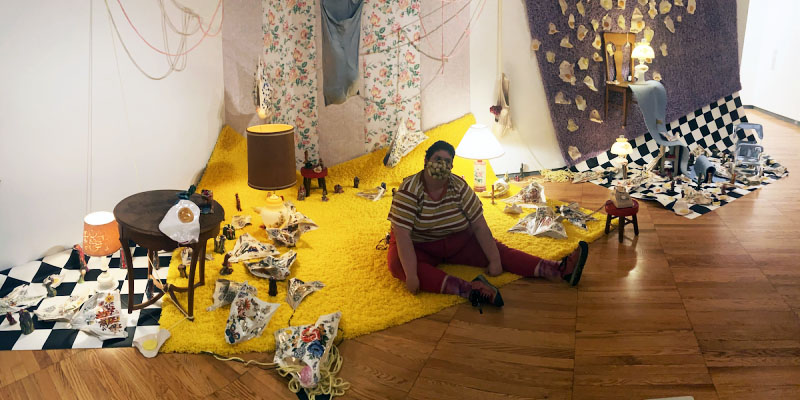Queering the visual arts with two installation artists
For LGBTQ+ artists, both the social risks and emotional benefits of sharing aspects of their identities in their work are particularly high.

For LGBTQ+ artists, both the social risks and emotional benefits of sharing aspects of their identities in their work are particularly high.
Melinda McIntosh shares that en plein air painting teaches us “if we’re not quick to capture something it may not be around a week later.”
When asked about any upsides to this year's virtual format, 8 to Create president Caroline Wuerl said “it is refreshing to know that we have the potential to reach even more people now that it’s streamed virtually.”
When asked about her ongoing investigation of empty spaces, artist Drea Aarons says “Life is full of a bunch of junk, and we’re busy pretending otherwise.”
“Seeing the creative decisions of three different illustrators together in one drawing is fascinating. Our approaches were as varied as the weirdos we ended up creating,” says Urbana-based woodcut illustrator Lydia Puddicombe.
”The young women of Sisterhood Academy would like to bring to you our difficulties and our victories. We want you to know that we all struggle sometimes but it does get better. Women of Color are a significant part of history.” Excerpted from the Sisterhood's artist statement.
Matt interviews Judy Lee, founder of the downtown Urbana fabrication studio Made in Urbana to learn their secrets to success during the COVID-19 pandemic.
The story of Michael Roughton's young elfin heroine may be what we all need to get through this lonely COVID winter.
At a recent Small Press Fest workshop, zine expert Dr. Spencer Keralis guided us through the history and culture of zine-making and what makes it so inherently queer.
What exactly is a small press? And how does it differ from zines and distros?
